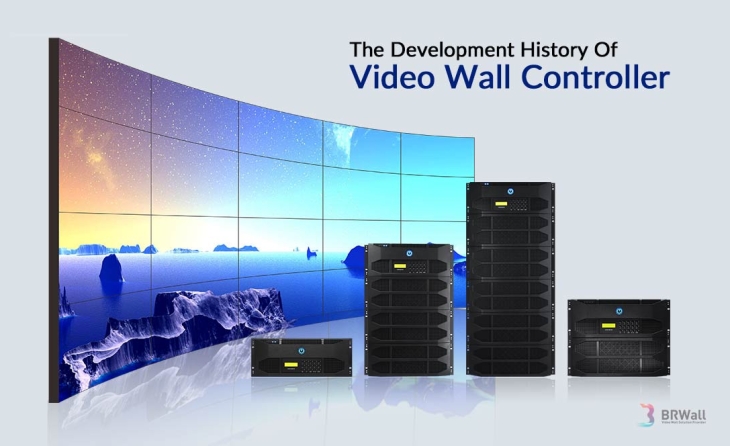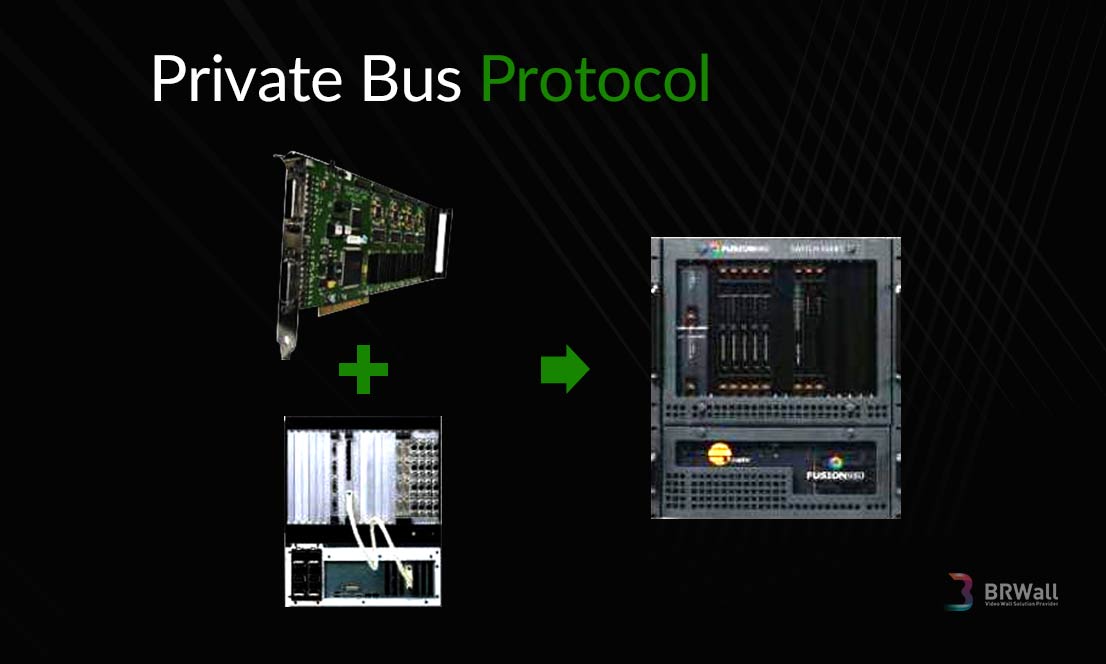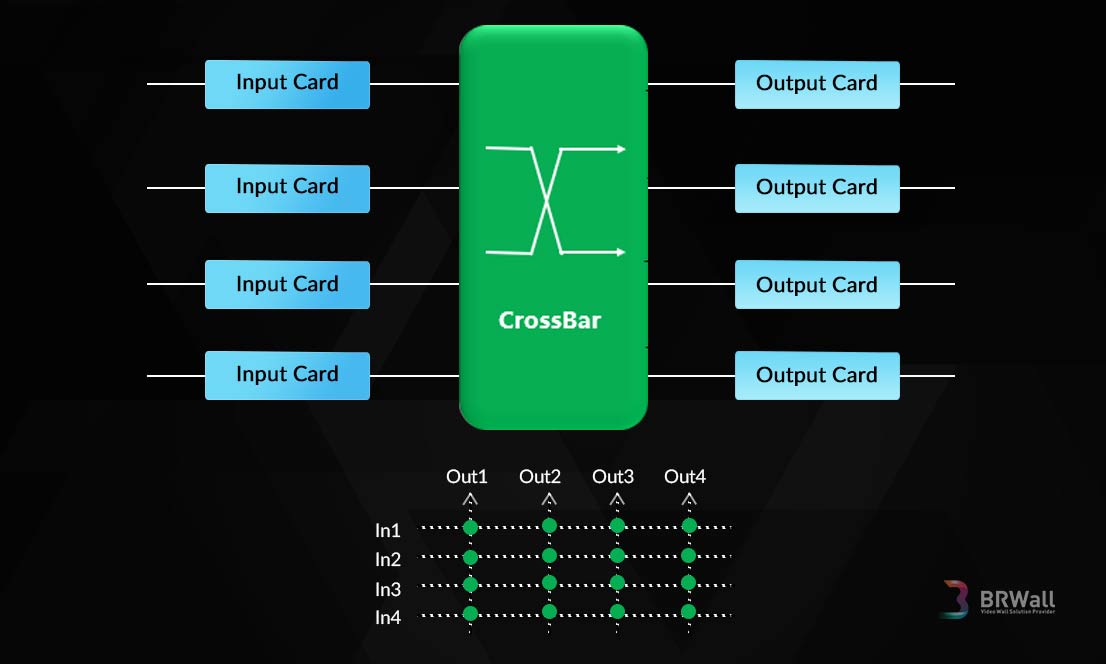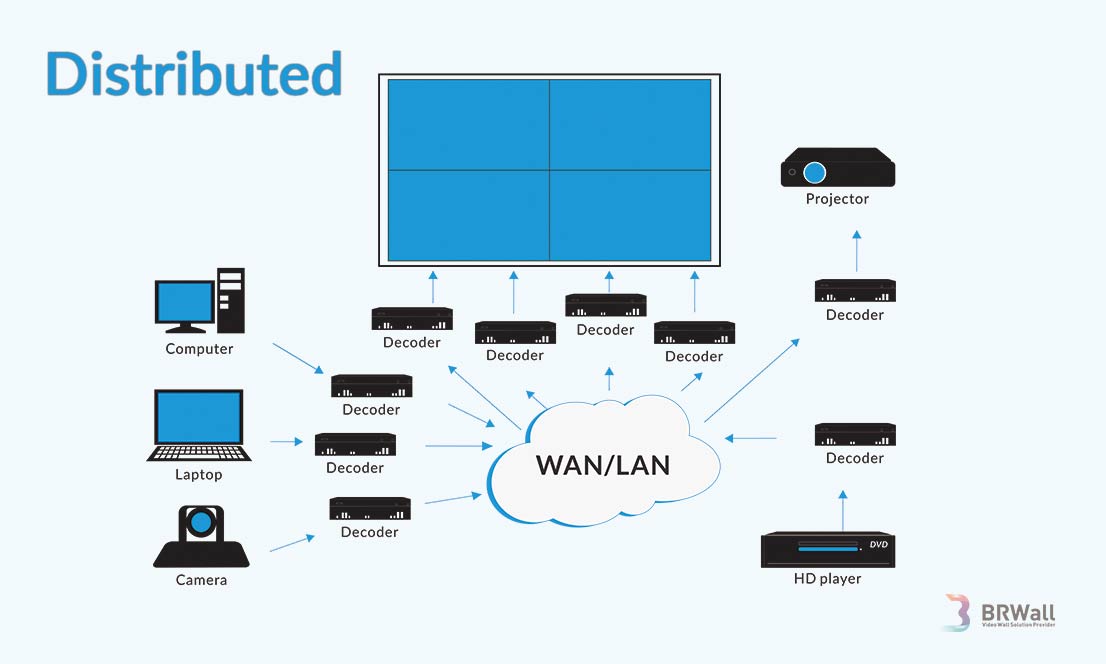The third generation of video wall controller is distributed or IP based, connects the image acquisition, image transmission and image display through a digital network. The network is used as a large-screen signal transmission carrier. The structure allows input and output nodes to be geographically dispersed and has great flexibility. The system has the functions of multi-point image signal sharing, network image input and output, and mobile terminal preview control. The features are put all input signals are encoded by the encoder, and then enter the network, and the output terminal outputs the upper screen through the decoder. The distributed splicing processor has a qualitative leap in engineering flexibility because of its scattered physical structure. It can be used to quickly build a complete system on a small-scale project, and it can be upgraded and expanded, or it can be directly It is applied to large-scale and complex projects, which reduces the difficulty of the project and enriches the features of functions. It can even split a complex function into multi-phased construction to solve the problem of construction costs.
In summary, the splicing processor has grown in the market for more than thirty years, from the PC architecture, to the centralized architecture, and then to the network distribution. Although the production time has a sequence, but the three generations of products have their own Advantages and disadvantages, there is currently no absolute elimination mechanism. Thus different architectures adapt to different application scenarios, so that different architectures occupy different ratios in the market.
With the market trend, the most suitable market in the future should be a hybrid architecture, combining the advantages of FPGA and IP Based architecture.




